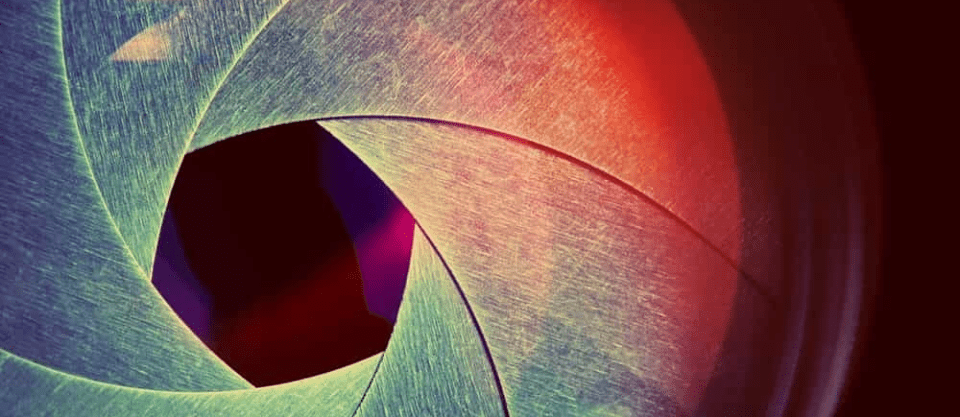
The Beginner’s Guide to Aperture
Understanding manual modes is about more than just shooting an image with a good exposure. Each element of the exposure triangle has an effect on more than just how light or dark an image is. Aperture plays a big role in an image, and not just for exposure either. The size of the opening in the lens plays a bigger role than you might think.
What is aperture?
Aperture is the opening in the camera’s lens. Using small blades, most lenses can change the size of that opening. Of course, a wide open aperture will let in more light, while a narrow aperture lets in just a little. Adjusting the aperture accordingly will affect the image’s exposure. If an image is too dark, widen the aperture will help, and vice versa.
Aperture is measured in f-numbers, also called f-stops. A small number, like f/1.8, indicates a very wide aperture, while a large number, like f/22, is a very narrow opening. Grab your camera and put it on Aperture Priority mode (A or Av on the mod dial). Use the control wheel and watch the numbers on the screen change. Each time you adjust the aperture to one higher setting, half as much light will be getting in. For example, an f/2.8 lets in half as much light as an f/2 does.
 Aperture, then is essential to balancing the exposure. Images taken during a bright sunny day that are too bright can be corrected by using a narrower aperture. Many images that are too dark can be corrected by widening the aperture.
Aperture, then is essential to balancing the exposure. Images taken during a bright sunny day that are too bright can be corrected by using a narrower aperture. Many images that are too dark can be corrected by widening the aperture.
However, the range of possible apertures varies based on what lens you are using. Many kit lenses have maximum apertures of about f/3.6. High-end lenses and many prime lenses can start at f/1.8, or sometimes even lower. When shopping for new lenses, it’s important to consider that maximum aperture number, usually listed right in the lens name, since the aperture range isn’t dependant on your camera body, but your lens.
What else does aperture do?
Adjusting the aperture will affect your exposure, but the size of the opening in the lens also plays a big role in another aspect of photography: depth of field.
Depth of field is simply how much of the image is in focus. If you want to show an entire scene, like when photographing a mountain vista, you’ll want most of the image to be sharp. However, a sharp background is also often distracting, like in a portrait. Aperture allows the photographer to control that.
A wide open aperture (remember, that’s a small f-number) will result in an image with just a small portion in focus. The background will be soft and unfocused, and if there are lights in the background, they’ll become orbs of light known as bokeh. Wide apertures are useful for drawing attention to a single subject, or simply eliminating an unsightly background.
A narrow aperture, on the other hand, leaves most of the image in focus. Using a wide open aperture to take a picture of that mountain vista, the foliage in the front may be in focus while the mountains are vague triangles in the background. Not so with a narrow aperture. Now both the details of the plants at the front of the image and the mountains in the background are included.
Of course, there’s a wide range of f-numbers, so aperture can be used to achieve a depth of field that’s just right for your particular image. The depth of field preview button is usually located on the front of the camera between the base of the lens and the hand grip. It often looks similar to the button used to take your lens on and off, just on the opposite side. When you hold the depth of field preview button, you can use the viewfinder to see just how much of the image will be in focus.
 Common aperture mistakes
Common aperture mistakes
Mastering aperture can take some time, particularly when working with the depth of field. As you learn, watch your images for some of the most common aperture mistakes.
Aperture too wide
In an effort to achieve that soft background, make sure all of your subject is in focus. Be careful when using fast f/1.8 lenses to ensure everything you want in focus is indeed in focus. If you are taking a portrait, watch and see if the ears are still in focus unless you’re intentionally going for a different effect.
Shooting action wide
Since a wide aperture lets in the most light, it’s easy to just use the widest setting while shooting action to keep that shutter speed high. Be careful though. While there’s nothing wrong with shooting sports with a wide aperture, it’s much more difficult to get the subject in focus. With a wide aperture, there’s much more room for error. Try a slightly higher aperture until you’re confident you can focus quickly and accurately.
Shooting multiple subjects wide
If you have more than one subject, like when taking a group photo, the subjects must all be the same distance from the camera in order to remain in focus with a wide aperture. Shooting a team photo with rows of athletes, for example, use an aperture of at least f/11 to keep all the faces focused.
Forgetting there’s middle ground
Apertures don’t just have to be very wide or very narrow, there’s an in-between. Try to use the depth of field preview button to compose your shot with all the right elements in focus and just enough of the background out-of-focus.
Aperture is essential to mastering manual modes, but it also plays a role in depth of field too. When choosing your settings in manual mode or aperture priority, base your f-stop on both exposure and depth of field. Sure, it’s a delicate balance between nabbing the exposure and also getting the perfect depth of field, but it’s a dance that’s well worth mastering.
Looking to sharpen your photography skills? Join our top-rated professional diploma in photography today!



